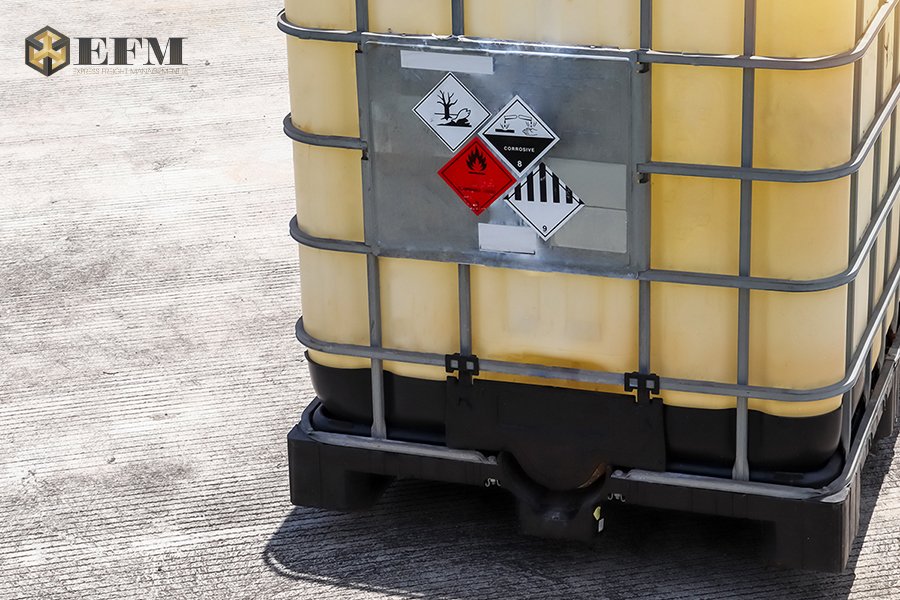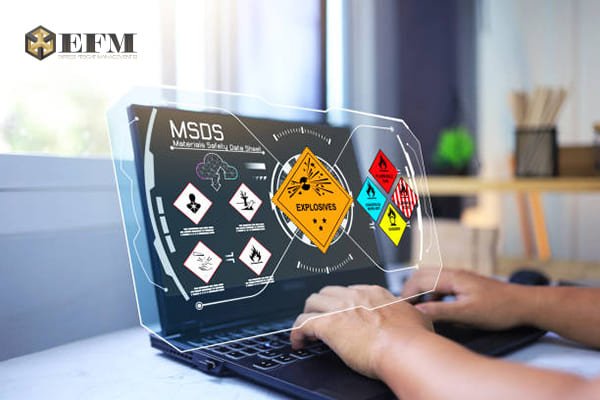How To Ship Dangerous Goods

Dangerous goods shipping can feel daunting, but it follows a clear, four-step process. Even one mistake can cause delays, fines, or rejection. This guide shows you how to ship safely and stay compliant from start to finish.
Step 1: Classification and Identification
Before you can pack, ship, or even get a quote, you must know exactly what you are dealing with. This is the single most important step in the entire process.
First, locate the product’s Safety Data Sheet (SDS). This document, provided by the manufacturer, contains the critical information needed for classification. Look for the “Transportation Information” section—usually Section 14. This part of the SDS will tell you whether the product is classified as a dangerous good.
If it is, you must identify three things:
- Hazard Class: There are nine classes of dangerous goods, which categorize the type of risk (e.g., Flammable, Corrosive, etc.).
- UN Number: A four-digit number that identifies a specific hazardous substance (e.g., UN 1263 for Paint).
- Proper Shipping Name (PSN): The standardized, legal name for the substance (e.g., “Paint”).
NOTE: Many shippers assume their product is non-hazardous. However, this often isn’t the case. Items such as electronics with lithium batteries (UN 3481), aerosols (UN 1950), and perfumes (UN 1266) are regulated dangerous goods. Always consult the Safety Data Sheet (SDS) first.
Struggling to classify your product? Get it wrong and the entire shipment stops. Contact our logistics team for a complimentary consultation.
Step 2: Packaging
Once your product is classified, the regulations dictate the exact type of packaging you must use. Standard cardboard boxes are not sufficient.
Your product’s classification shows its Packing Group (PG). There are three groups that indicate the danger level and how strong the packaging must be:
- Packing Group I: High danger
- Packing Group II: Medium danger
- Packing Group III: Low danger
You must use UN-Specification Packaging, tested to withstand drops, vibrations, and pressure changes. Such packaging bears the UN mark on its side, indicating compliance with dangerous goods shipping standards.
Step 3: Marking and Labeling
Your fully packed box must be marked and labeled with the following information:
- The UN Number
- The Proper Shipping Name
- The full name and address of the shipper and the consignee (receiver)
- The appropriate hazard class label(s) (diamond-shaped pictograms)
The labels must be placed on the package correctly, without being folded or obscured. This tells everyone what’s inside and how to handle it safely. It’s important to get this step right.

NOTE: Always double-check your carrier’s specific rules. Certain airlines have stricter limitations on certain UN numbers. Some even require additional markings beyond the standard regulations.
Step 4: Prepare Documentation
When sending dangerous goods, the sender must fill out a form called the Dangerous Goods Shipper’s Declaration (DGD). This form confirms the shipment is packed, labeled, and declared according to IATA’s rules. A properly completed declaration helps avoid safety risks.
Remember to check and make sure that the document matches what is on the package itself. Any discrepancy will cause the shipment to be rejected.
Freight Forwarding
Following these four steps is essential for compliance with global standards like IATA (for air freight) and IMDG (for sea freight). On complex routes, however, the details make all the difference. Mastering them prevents costly delays and ensures a smooth delivery. This is where an experienced freight forwarder is essential. They act as your project manager, ensuring every loose end is tied up. A good forwarder will:
- Verify your classification and documentation.
- Source the correct UN-specification packaging.
- Ensure compliance with both global regulations and carrier-specific rules.
- Help process customs clearance on your behalf to prevent delays.
Further Reading: How to Choose the Right Freight Forwarder for USA–ASEAN Shipping
Express Freight Management
Any forwarder can move a box. But very few have mastered the art of shipping dangerous goods on the world’s most complex trade lanes. Express Freight Management specializes in simplifying the complicated. Experts in the USA-to-ASEAN lane, we handle compliance issues with ease. With our great location and strong global network, we can handle all kinds of cargo, big or small, and get it where it needs to go with care.
Express Freight Management is your trusted partner for seamless global shipping solutions. We offer a comprehensive suite of logistics services, from shipping to customs clearance to warehousing and more. As a leading international freight forwarder based in the United States, we have successfully managed trades between the United States and Brunei, Cambodia, Indonesia, Laos, Malaysia, Myanmar, Philippines, Singapore, Thailand, and Vietnam for nearly two decades. Discover a streamlined approach to logistics with Express Freight Management for your shipping needs between USA and Southeast Asia today!
